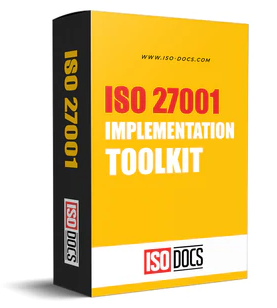Annex A, Information Security Controls of Annex A, Annex A and ISO/IEC 27002
Introduction
It contains Annex A of ISO/IEC 27001, as well as its interplay with ISO/IEC 27002, which makes it quite comprehensive in its perspective on information security management. Annex A specifies security controls for compliance, while ISO/IEC 27002 details their application. Below that will be a search engine optimization-focused depth on this subject for a blog complete with actionable wisdom and tactical use of keywords to optimize discoverability. Surely, in today's hyperconnected world, which has made data sensitivity and resilience of digital infrastructure synonymous with organisational credibility, comes in ISO/IEC 27001, an internationally recognised standard for information security management for organisations. The crux of ISO/IEC 27001 is its Annex A - a complete set of information security controls. Understanding Annex A and the way it intertwines with ISO/IEC 27002 streamlines the certification path for an organisation while building up the security posture against many of today's attacks.

What Is Annex A In ISO/IEC 27001?
Annex A bears utmost importance in ISO/IEC 27001 by laying out a classified set of information security controls developed to address a variety of organizational risks. Controls are essential to the implementation of an effective Information Security Management System (ISMS), while the actual implementation may be considered to be the backbone of activities of compliance.
- The 2022 revision reduces the controls from 114 to 93, categorized under four main groups: organizational, people, physical, and technological.
- Each control allows for a particular treatment of information security risks identified during a risk assessment.
The Structure Of Annex A: Key Themes
1. Organizational Controls (37 controls)
These controls govern policies, procedural responsibilities, and management systems that enable effective information security across the organization. They address:
- Security policies and governance
- Risk assessment methodologies
- Incident management
- Asset classification and media handling.
2. People Controls (8 controls)
People are often the first line of defense - and sometimes the weakest link. These controls ensure that personnel are screened, trained, and aware of their security responsibilities, covering:
- Pre-employment and ongoing screening
- Awareness programs
- Roles and responsibilities during remote work or third-party engagements.
3. Physical Controls (14 controls)
Securing the physical environment is as vital as the digital. Physical controls related to:
- Secure perimeters and physical access
- Equipment maintenance and protection
- Utilities and environmental safeguards.
4. Technological Controls (34 controls)
- Access management and encryption
- Malware protection and logging
- Secure software development practices
- Cloud and network security.
What Changed in ISO/IEC 27001:2022 Annex A?
1) The New Annex A of ISO/IEC 27001:2022
Control updates in Annex A have been made towards adaptation with evolving technology and threats.
- 11 out of the new controls emphasize the case of cloud protection and threat intelligence among others.
- 24 merged controls from two or more controls; these represent some of the best practices to simplify.
- Controls are now more flexible and modularized for incorporation within cloud, DevOps and hybrid IT setups.
The four thematic areas also replace the previous 14-domain structure in favor of enhanced clarity and applicability.
2) Annex A and the Statement of Applicability
The SoA is one of the cornerstones of the journey of building an ISMS:
- States which Annex A controls would be operated, along with rationale for inclusion or exclusion.
- Maps out implementation statuses and gives references for any other controls not in Annex A.
- Forms a strand in the backbone of reference for certification audits, making it crucial to be maintained and updated regularly.
ISO/IEC 27002: The Guiding Document
- While outlying which controls are required, Annex A goes into further detail as to the following:
- Explains the objectives, purposes, and implementation guidance of each control.
- Gives a good reference manual, but organizations are certifiable only against ISO/IEC 27001-not against 27002.
- Helps the organization in tailoring controls to unique operational needs.
Best Practice for Implementation of Annex Blue Controls
- Derives the selection of controls from a detailed risk assessment-thorough yet relevant coverage.
- Utilizes internal and external audits to assess the effectiveness of controls.
- Maintain justification and documentation for all controls not implemented-keep these records current in the SoA.
Conclusion
Besides doing its own thing as a control framework, Annex A synergizes with ISO/IEC 27002 to form a solid foundation for the management of information security risk in a constantly changing landscape of threats. By awareness of the structure, selecting appropriate controls, and implementing ISO/IEC 27002, organizations thus not only advance compliance but also allow for the creation of resilience and trust with stakeholders. Making the Statement of Applicability current and keeping control coverage agile will enable the organization to keep abreast of fast-evolving risks. Annex A, when mastered, can enable companies to align it with business objectives, thus bringing compliance to become their competitive advantage—one control at a time.


